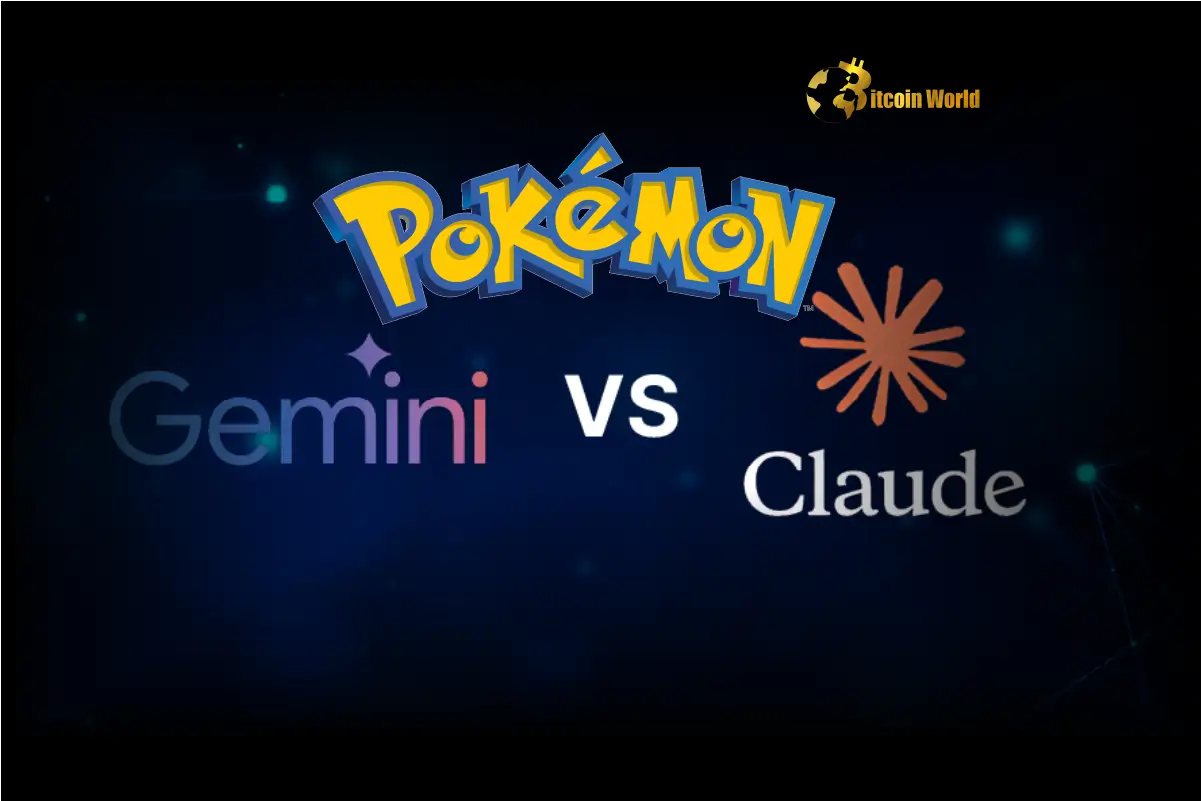Hold onto your Poké Balls, crypto enthusiasts! The usually serene world of Pokémon has been stormed by the turbulent debates of AI benchmarking. Yes, you heard it right. The quest to be the very best, like no one ever was, now extends to Artificial Intelligence models. But is this playful foray into gaming revealing crucial truths, or just muddying the waters of AI performance evaluation?
The Pokémon Benchmark Battle: Gemini vs Claude
Last week, the internet buzzed with a viral X post claiming Google’s Gemini AI model had decisively outmaneuvered Anthropic’s Claude in the classic Pokémon Red and Blue games. The claim? Gemini reached the eerie Lavender Town, while Claude was seemingly stuck in Mount Moon. This sparked excitement, with many seeing it as a clear victory for Gemini in a real-world AI benchmark scenario.
Gemini is literally ahead of Claude atm in pokemon after reaching Lavender Town
119 live views only btw, incredibly underrated stream pic.twitter.com/pAvSovAI4x
— Jush (@Jush21e8) April 10, 2025
However, as with most things in the AI world, the devil is in the details. Before we declare a champion in this Pokémon benchmark, let’s unpack what really happened.
Unpacking the Controversy: Minimaps and Modified Benchmarks
The viral post conveniently omitted a crucial detail: Gemini wasn’t playing Pokémon entirely unaided. Sharp-eyed Reddit users quickly pointed out that the developer streaming Gemini had implemented a custom minimap. This minimap essentially spoon-fed Gemini information about the game environment, allowing it to easily identify ’tiles’ like cuttable trees. This significantly reduced the cognitive load on Gemini, eliminating the need to visually analyze screenshots to make gameplay decisions. Claude, on the other hand, was playing with a more standard setup.
Think of it like this:
| Feature | Gemini (Modified Benchmark) | Claude (Standard Benchmark) |
|---|---|---|
| Gameplay Assistance | Custom Minimap (Tile Identification) | Standard Game Interface |
| Analysis Required | Reduced (Minimap provides direct tile data) | High (Screenshot analysis for decision making) |
| Benchmark Fairness | Potentially Skewed in favor of Gemini | More representative of raw AI capability |
This raises a critical question: Is this still a fair comparison of AI models, or have we inadvertently created a biased scenario? While Pokémon might seem like a lighthearted example, it highlights a serious issue plaguing the AI world: the inconsistent implementation of benchmarks.
Why Benchmark Implementation Matters for AI Performance
Let’s be clear, Pokémon isn’t going to replace industry-standard benchmarks like SWE-bench for evaluating coding prowess. However, this playful example vividly illustrates how variations in benchmark setup can drastically influence results and complicate the comparison of AI performance.
Consider the SWE-bench Verified benchmark, designed to assess a model’s coding skills. Anthropic themselves reported two different scores for their Claude 3.7 Sonnet model:
- 62.3% accuracy: Standard SWE-bench Verified
- 70.3% accuracy: SWE-bench Verified with a “custom scaffold” developed by Anthropic
That’s a significant jump! Similarly, Meta reportedly fine-tuned a version of their Llama 4 Maverick model specifically to excel on the LM Arena benchmark. The ‘vanilla’ version of the model performed considerably worse on the same evaluation.
The Growing Challenge of Comparing AI Models
The core problem is this: AI benchmarks, even the most rigorous ones, are inherently imperfect. They are snapshots, approximations of complex capabilities. When we introduce custom implementations and non-standard setups, we risk making these already imperfect measures even less reliable. This ‘benchmark controversy’ isn’t just about bragging rights in Pokémon; it has serious implications for how we understand and compare the rapidly evolving landscape of AI models.
As AI technology advances at breakneck speed, the challenge of objectively comparing different models is only going to intensify. The Pokémon example, while seemingly trivial, serves as a stark reminder: we must be critically aware of the nuances of benchmark implementation and avoid drawing definitive conclusions based on potentially skewed results. The quest for truly reliable and universally accepted AI benchmarking methods continues, and the stakes are higher than ever.
To learn more about the latest AI market trends, explore our article on key developments shaping AI features.
[ad_2]
Source link






